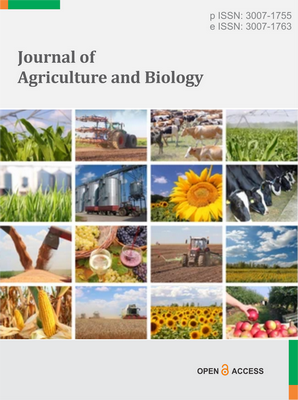Seed germination and seedling growth performance of berseem clover (Trifolium alexandrinum L.) populations under different irrigation water sources
DOI:
https://doi.org/10.55627/agribiol.002.01.0819Keywords:
Field irrigation practices, Saline water, Crop establishment, Local landraces, Fodder developmentAbstract
Irrigation water quality is closely associated with seed germination, however, information on the effect of water quality on berseem seed germination and seedling establishment is deficient. The present study evaluated the effects of using different irrigation water quality (indicative of local field practices); including distilled water (as control), canal water, tube well water and a mixture of canal and tube well water in a 50:50 ratio on three populations of berseem clover viz. cv. Agaitti Berseem-2002 (AB-2002) and two local landraces exchanged between farmers (LBF1) or available from local markets (LBM1). Seed germination percentage (GP) ranged from 89.5% to 99.5%, while the emergence energy four days after sowing (EE4DAS) ranged from 42.7% to 77.6%. The use of tube well water alone or in combination with canal water produced the highest GP (98.5%), EE4DAS (77.6%), germination rate (GR; 3.5 %/day), emergence index (EI; 13.8), shoot length (40.7mm), root length (20.9mm), root to shoot ratio (0.48), seedling vigour index (5835), shoot fresh and dry weights (135.7mg and 6.5mg) and root fresh and dry weights (58.8mg and 1.6mg), respectively. Moreover, all the pair-combination treatments between the water source and measured variables of using tube well water showed a strong positive correlation with increasing seedling growth parameters. The results further demonstrated that the seed genotypes significantly affected (P < 0.05) the studied parameters, with the AB-2002 population overall performed better in most seed germination and emergence parameters. However, the LBF1 seed population was found to be more robust in seedling growth and development traits.
Downloads
Published
Issue
Section
License
Copyright (c) 2024 Muhammad Shoaib Tufail, Gaye L. Krebs, Muhammad Shoaib Khan1, Alison Southwell, John W. Piltz, Mark R. Norton, Peter C. Wynn (Author)

This work is licensed under a Creative Commons Attribution 4.0 International License.



